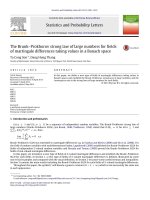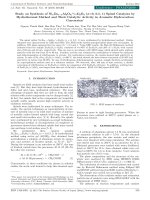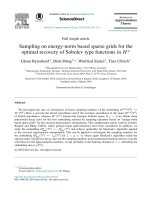DSpace at VNU: Research on organizing spatial production of economic models for agro - fisheries and processing industry in Diem Dien Town, Thai Thuy District, Thai Binh Province
Bạn đang xem bản rút gọn của tài liệu. Xem và tải ngay bản đầy đủ của tài liệu tại đây (1.43 MB, 11 trang )
VNU Jo u m al of Sciencc, E arth Sciences 24 (2008) 32-42
Research on organizing spatial production of economic
m o d e ls fo r a g r o - íis h e r ie s a n d P r o c e s s in g in d u s t r y
in Diem Dien Town, Thai Thuy District, Thai Binh Province
Dinh Van Thanh1, Le Van Ha2'*
1 Coỉlege of Science, V N U
2 Institute of Social Sciences in the Centre and Highỉands
Receivcd 18 Jan u a ry 2008; received in rc v ise d form 12 F ebruary 2008
A bstract. T h e p a p e r is íocusing on th e íollovving topics:
- A ssessm ent of n a tu ra l conditions in D iem Dicn Tovvn, su ch as: location, relieí, land, w a te r and
m arin e rcsources.
- R esearch, assess h u m a n and econom ic resourccs such as p o p u latio n , labor skills, in írastru c tu re,
political m cch an ism an d co n su m p tio n m arket.
- A nalysis, assess cííicicncy of cu rren t prod u cin g situ a tio n a n d o rg an izin g ag ricu ltu re, íisherics
for econom ic stru ctu ra l tran sitio n orien tcd in d u s tria li/a tio n a n d goods co m m odity.
- Set u p sp atial m odcls of agro - íisheries and P rocessing in d u stry w ith its n atu ra ỉ, social cconom ic a n d h u m a n co n d itio n s and d c m an d of g o o d s econom y, typical m odels of p ro d u c in g proccssing íruits, vegetable/ seavveed and alga, and especially m arin e econom ic m odcls.
The d e v c lo p m e n t of Sociocconom ic in th e Diem D icn in th e dircction of th esc m o d cls vvill
certainly yield high cconom ic efficicncy.
Keyivords: Econom ic m odels; S patial production; A gro-fishcry; D icm D icn T ow n.
is íavorable for socio-economic cooperation,
and rich soil resources and a w ide variety of
seaíood; and, especially, has highly potential
oí w ater suríace for sea and brackish
aquaculture, w ith labor resource having an
enriched m ind oneselí, but u p to novv these
advantages h av en 't exploited effectively. The
m ain reason is the lack of und erstan d in g and
p ro p er evaluation of potential of natural and
hu m an
resources,
lack of
Processing
technology and especially disorganizing to
set
up
suitable
econom ic
m odels,
disconnecting closely betw een m aterials
p ro d u ctio n and consum ption.
1. In troduction
In the attem pt of d riv in g Vietnam to be an
industrial country by the year of 2020, One
im portant problem is to develop highlyspecialized agriculture, w hich should be
com bined vvith Processing industry w ith
advanced technology in order to produce
consum er products, and export high quality
products [4, 8].
Diem Dien Tovvn, Tha: Thuy Distriet, Thai
Binh Province has the Diem Dien Port which
*Corresponding author. TeL: 84-4-983760610
E-mail: levanhageohOtyahoo.com
32
Dinh Van Thanh, Le Van Ha / VN U loum al o f Science, Earth Sciences 24 (2008) 32-42
C onsequently, researching an d assessing
the developing resources for the p u rp o se of
setting up su itab ỉe econom ic m odels on the
basis of eííective use of n atu ral and
socioeconom ic advantages vvill help Diem
Dien Tow n becom e an urban area having a
structure of in d u stry - agro - íishery and
trade according to its potential, contributing
to eííective land use, incom e g ro w th and
econom ic d ev elo p m en t [4, 5].
2. Resources for o rg a n ừ in g spatial production
2.1. Geographic ecortomic location
Diem Dien Tow n is located at the Dicm
Ho river m outh, in the east of Thai Thuy
District, Thai Binh Province. The tow n is
su rro u n d ed w ith T huy Trinh, T huy Luong,
Thuy Hai and Thai T huong com m unes,
vvhich are vvell-knovvn íor h av in g rich
agriculture and aqu acu ltu rc production. The
river m outh of Diem Dien Tow n opcned
through the Diem Dien seaport vvhich is very
íavorable íor trad in g w ith C hina and
dom estic regions.
Diem Dien Tovvn has the provincial road
No. 218 and the district road No. 319 that link
the tovvn to Thai Binh and Hai Phong cities,
vvhich create íavorable econom ic relations
vvith dom estic regions and íoreign countries.
The value of geographical-econom ic-traffic
location of D iem D ien Tow n is investigated to
study and use for the p urpose of economic
developm ent, Diem Dien tow n vvill take off
and becom e an u rban vvith highly developcd
industry, com m erce and services [5].
2.2. Climate resources
The clim ate of Diem Dien Tovvn has
radiaticn system and local hydrographic
íeatures w ithin the tropical zone and
33
circulation of atm osphere. The interaction
betw ecn these tw o conditions created climate
in this area that has a character of ocean
m onsoon vvith long cold vvinter. The
m onitored data at different w eather stations
around the tow n have show n that the annual
average tem perature is 23°c - 24°c. The
average air tem perature of the coldest m onth
of year is 16.7°c of the hottest m onth is 29°c
and the average hum idity íluctuated from
80% to 84%.
The tropic and m onsoon climate system
vvith the long w inter season from Novem ber
to A pril creates capability to grow various
vegetation system vvith m any tropical and
tem perate plants, such as: rice, bean, peanut,
cucum ber, casaba m elon, and so forth.
YVinter, how ever, vvith low tem perature and
changeable vveather rain and storm s have
reduced the productivity of the crops and
dom estic anim als, especially, causing great
dam ages
to seaíood exploitation and
aquaculture.
2.3. Water resources
The Diem H o River (also called Diem
Dien River) pours itselí into Diem Dien
M outh vvhich is One of seven m ain riverm ouths of the Red River Delta and is also the
m ain river that runs through Diem Dien
Tovvn. The hydrographic system has been
o pened through to be drained at early stages,
new river routes are built for the Service of
w atering/ draining avvay and traííic, and so
íorth. Besides, Sing and Gu rivers are
im portant sources of vvater for agricultural
developm ent. The vvater resources is
plenteous, ensuring suííicient w ater supply to
socio-economic developm ent. Hovvever, it is
necessary to have m ethods for preserving
vvater sources, resistance of pollution,
saltizing/ alum ing, etc.
34
Dinh Van Thanh, Le Van Ha / VNƯ Ịoumal of Science, Earth Sciences 24 (2008) 32-42
2.4. Soil resources
There are the tvvo m ain groups of soil:
vvetlands w hich is existed inshore; and
alkaline soil w hich has been íorm ed by
iníluence of sea w ater or subterranean w ater
from the sea distrib u tin g over entire area of
Diem Dien Tovvn. A gricultural land has been
used to grovv food crops and vegetation, such
as: m aize/ lettuce, cucum ber,... occupying
only 21% of the total area. The uncultivated
land rem ains a íairly large area, including
31% of new alluvial soil w hich equals to 86
ha, vvhich is d istrib u ted over an even and flat
terrain, and vvhich can be im proved to grow
farm products and develop aquaculture.
Generally, the agricultural land and
vvetlands íor aqu acu ltu re in this area is not
large, but it has a possibility of íurther
extension by im proving acid soil, alkaline soil
and building dikes encroaching the sea. Due
to limited land resources, it is essential to
have a suitable land use planning, and shift
the structure of crops and dom estic animal
vvith highly intensive cultivation, diversiíy
goods in o rd er to serve the Processing
industry and exportation.
2.5. Marine resources
The m arine vvaves system changes
seasonally. From D ecem ber to M arch, the
main vvave direction oííshore is northeast
vvhich is about 61% and the eastem is about
15%. VVhereas inshore it is m ainly east
direction vvith a írequency of about 34%.
M arine w ave has average height of 1.2m
(maxim um of 6.6m). The altitu d e of inshore
waves is from 0.5m to 0.6m. From June to
September, the prevalent w ave directions
over the territorial w aters of Diem Dien Town
are the south, southvvest, and east w ith the
oscillating írequency from 40% to 75%.
M eanw hile/ the northern w ave predom inates
over about 37%. Conversely, the w ave
inshore has south-east direction w ith average
írequency of about 24%. The highest altitude
of vvaves oííshore is írom 7 to 8 m eters and
inshore is from 5 to 6 m eters. The higher
levels of w aves occur only vvhen having
storm s vvith all 8 basic directions and inshore
it is m ainly east, northeast and southeast. In
the transition season írom April to May, the
w ave direction offshore gradually m oves
írom the northeast to the South, even írom
O ctober to N ovem ber the w ave changes in
the opposite direction, northeast direction
oííshore
and
east
direction
inshore.
Especially, in the transitional stages, the
intensity of w aves is decreased considerably.
The m arine vvave system here is íavorable for
boats to exploit seaíood [2].
The tidal íeature of the studying area is
the tidal solar system s w ith high vibration
am plitude. D uring the day there usually
occurs the crest of tide (high vvater) and the
root of tide (current water). D uring the m onth,
there are tw o crest of tide w ith vibration
am plitude of w ater level from 2 to 4, each
period is lasted from 2 to 3 days. In the period
of the current w ater, the property of tidal
solar decreases obviously, but the property of
half tidal solar is increased which leads to
tw o crests of tide in a day. In general, the
period of tide crest is not íavorable for boat to
exploit seaíood oííshore, b u t thc tidal system
has a role of dynam ical hydro-pctrography.
In general, the salinity of sea w ater is very
lovv, which íluctuates from 9% to 17% in dry
seasons, it rarely increases up to 25-30%. In
dry seasons, the average salinity of sea vvator
can also reach m axim um 31-32%. The sea
created the specitìc strength for Diem Dien
T ow nỵ that is, the capability to develop
producing branches based on the salinity of
sea w ater and tidal such as salt production,
D inh Van Thanh, Le Van Ha / VN U Ịoumal of Science, Earth Sciences 24 (2008) 32-42
35
seaíood rearing, exploiting and Processing.
The seaíood reserve in Diem Dien is from
about 15,000 to 20,000 tons per year, and the
possible exploiting capability is about írom
12,000 to 16,000 tons per year. The m arine
resources of Diem Dien consist of vvhole high
tides area, m ean tides, lovv tides, Continental
shelí and econom ic zone w hich allows the
town to develop synthetically m arine economic
branches closely connected vvith Processing
industry at small an d m edium scale [2, 5].
The sea potentiality is rich, b u t it is urgent
to have an eííective exploiting program s, and
to invest m o d ern eq u ip m en t for exploiting
oííshore, and to ap p ly technical Science and
technology in o rd e r to preserve thc source of
seaíood, to increase catching productivity and
output. Thereíore, it is necessary to study
seaíood plan an d Processing industry in
order to achieve th e highest econom ic effect
in order to raise income, create diversiíied
jobs and shiít the local econom ic structure
according to in dustrialization m otivation [4].
Dien People's C om m ittee of Tovvn, by the
year of 2005, the population is 10,200 vvith
2,589 households; all of them belongs to the
Kinh ethnic. The households that rely on
agricultural production m akes u p 6.9%, on
aquaculture - 9.9%, on industriai production
and construction - 3.8%, on commerce and
Service - 10%, and on handicraít - 4.4%. In
2005, the rate of labor of tow n m ade u p 49.6%
of the total population, b u t the num ber of
labor having proíessional technical education
is only 34.1%; of w hich 9.3% is at prim ary
level, 13.8% is at the interm ediate level, 3.7%
is at college level, 3.7% is at university level,
and 0.7% has m aster level. In general, the
quality of labor in Diem Dien is not
proíessional enough, and there is a lack of
labor vvith high skill and high-grade workers.
There is a need to train technical vvorkers in
o rder to m eet the requirem ent of shiíting
econom ic structure.
2.6. Labor resources
The district's traííic system has the main
provincial road no. 218 and the district road
no. 39B which links Diem Dien to Thai Binh
city. The total length of roads in Diem Dien
Tow n is 7.365 km, am ong those 5.375 km is
asphalted, the rest is stone-paved road.
A lthough the traííic netw ork in Diem Dien
Tow n has not good enough, it m eets the
requirem ents of transport and delivery of
goods. Diem Dien seaport, the biggest seaport
of Thai Binh Province, has a great attraction
of im port and export goods, especially with
China. The tow n have installed electric
system^ supplying and drainage vvater system
w hich ensures lighting and supplying
electricity povver and clean w ater for
inhabitants.
Educational, healthcare and cultural
netvvorks of the tow n are being invested and
The d evelopm ent settlem ent in Diem
Dien Tow n is closely related to the history oí
dykes building a n d land reclam ation in order
to change alluvial gro u n d into cultivated
areas in Thai Binh Province. O ver the
territory of D iem Dien Tovvn, there vvere
som e places w h ere the people vvere settled for
hunđred s of years and there are some places
vvhere people h av e just settled up villages
and ham lets 10-15 years ago. Today, people
w ho are living in the Coastal zones still
continue to build dykes and land reclamatìon
to set up new villages and ham lets in o rd er to
carry o u t the strategy of new econom ie
developm ent an d expand existing space to
the sea.
According to statistical data of the Diem
2.7. ỉnfrastructure conditions
Dinh Van Thanh, Le Van Ha / VNU Ịournal of Science, Earth Sciences 24 (2008) 32-42
36
u p g rad ed gradually. Up to the year 2003,
prim ary education and junior high education
are com pulsory in the w hole tovvn w ith 12
classes of K inder garden, 31 classes of
prim ary education, 30 classes of junior high
education, one high secondary school and
one vocational training school. The hospital
of Diem Dien Tovvn is one of the best
hospitals in Thai Binh vvith m odem
equipm ents and high medical proíessionalísm.
Iníorm ation and culture system is quite
developed; there are 15 telephones per 100
inhabitants, together w ith a íairly developed
radio and television netvvorks dow n to each
household [2].
3. S tatus and p ro d u cin g effectiveness of
econom ic sectors
played a m ain activity w hich m ade u p 35%
(in 2000), 40% (in 2003) and 42.5% (in 2004).
The b read in g of beeves, pig husb an d ry and
p o u ltry ar*e developing, how ever/ the
p ro d u ctiv e scale rem ains small. The to w n 's
livestock and poultry branch have not m et
local consum ption and export, hence it is
necessary to choose suitable breading anim als
vvithin the lim ited sources of food.
3.2. Marine economic sector
T he m arine econom ic sector is key to
p ro d u ctio n of Diem Dien Tovvn, which
accounted for 6.2% of GDP in 2004. The
m arin e econom ic consists of the branches of
catching and exploiting organism sources and
seaíood Processing.
3.2.2.
3.1. Agriculture
3.1.1. Cultivation
ư p to 2004, agricultural land area of the
vvhole tovvn w as 61 hectares vvhereas foodproduced land w as 56 ha, the other w as to
grow vegetables. A lthough productivity
increased highly, u p to 2005, the average
productivity of rice is over 6 tons per hectare,
the food yield and the average annual íood
per person a year is still low w hich h aven't
satisíied people's living. U nder the trend of
industrialization/ the agriculture land is
decreased gradually, so it is necessary to
research in o rd er to transíer from íood
production to the other crops vvhich have
econom ic effect not only íor exporting value
b u t also m aking raw m aterials for íood
Processing , and to achieve turnover over 100
m illions VND per hectare per year.
3.1.2. Breading industry
In the agriculture structure, the livestock
The catching and expỉoiting sources oỊ
the marine organism
The num ber of íishers of the tow n is 800
people w ith h ard-w orking nature, rich
nautical and catching and Processing seaíood
experiences. The system of catching boats has
40 boats vvith povver of 15 to 45 c v , 100 boats
vvith 46 to 90 CVr 90 boats w ith 90 to 320 c v
and 120 pairs of drift-net. D ue to poor
equipm ents, íishers are im possible to exploit
sẹaíood oííshore, The m ain catching object is
íloating fish. The o u tp u t of seaíood just
achieved
over
6,000
tons
per
year
(equivalently to a halí of the total capacity).
N o w ad ay s/ the tow n has four co-operatives
w ith 96 specialized vvorkers, a private
catching com pany vvith 20 w orkers and 3
offshore-fishing g ro u p s w ith 380 w orkers.
The offshore íishing o u tp u t achieved 1,750
tons (in 1999), 2,100 tons (in 2000), 2,500 tons
(in 2004). A lthough the o u tp u t of seaíood
increases gradually at the annual average rate
in the period of 1999 to 2004 about 8.5% per
year, the cííectiveness of catching offshore by
Dinh Van Thanh, Le Van Ha / V N U Ịoumal o f Science, Earth Sciences 24 (2008) 32-42
boats are not high yet. The m ain cause is that
the íishing knovvledge is still lim ited, the
catching net and eq u ip m en t is prim itive,
catching technique is backw ard/ the serving
boat is not yet to provide cold ice, ravv
m aterials and tra n sp o rt seaíood to consum e.
Boats w ith sm all povver of m otor are lim ited
to inshore catching, the effect is m ore reduced
so the íishing g ro u n d is n arro w / there are
exploiting m any boats, the en v iro n m en t is
polluted, the source of incom e of seaíood is
exhausted. The spending on fuel, raw materials,
vvorking vvages, to repair catching m eans and
the tim e com e back the oííshore an d inshore
catching that still is too high, and so íorth.
3.2.2. Aquaculture production
A quaculture
production
is one of
traditional proíessions of inhabitants in Diem
Dien Tovvn. ư p to 2003, the to w n 's seaíood
aquaculture area w as 8 ha, covering 2.81% of
natural land area, how ever/ aquaculture
production is still potential and its capability
can be ex p an d ed íurther based on the
potential of exploitation and utilization of
tidal peak and
m edium
zones. The
aquaculture area of w ater suríace can be
developed up to 40 ha.
The existing aq u acu ltu re p ro d u ctio n is
natural exploitation, thereíore the prọductivity
is low. The average productivity achieved
about 50 to 300 kg p er hectare (shrim p, and
fish) and 500 to 2,000 kg seavveed p er hectare.
Today, the extensive cultivation form is
gradually changing to im prove intensive
cultivation form, a n d a sm all p art changed to
half
intensive
cultivation.
The
main
cultìvation objects are sugpo p raw n / crab and
edible seavveed. The average incom e per
cultivated hectare is at 14 - 15 m illions VND
per year. The aq u acu ltu re pro d u ctio n o u tp u t
achieves at 0.8% o f the gross o u tp u t of the
m arine industry.
37
3.3. Processing industry, handicraft and Service
3.3.1. Food P ro cessin g
Capacity oí Processing industry consum ed
about 50% of aquaculture production output.
The m ain Processing product is fish sauce
vvhich achieves from 1.5 to 2 millions liters
per year, dried fish above one m illion ton per
year, shrim p paste above 700 tons per year.
The total value of Processing o u tp u t achieved
about 15 biỉlions VND per year. The annual
average seaíood Processing product achieved
m ore than 100 tones of frozen shrim p and
fish, an d 15- 20 tones of aga.
The seaíood catching, cultivating and
Processing are the strong points of Diem Dien
Tovvn in the m arket econom y. If these
branches are invested, they will m ake a lot of
export products, create nevv jobs and help to
carry o u t rural industrialization and prom ote
other econom ic branches.
3.3.2. Handicraft production
A sedge m at vveaving is a traditional
handicraít in Diem Dien Tovvn. Its products
have been pop u lar in the dom estic m arket for
a long time because of high quality and
reasonable price, high skilled labor source. In
the recent years, d u e to backw ard technology,
lacking of invested Capital and unstable
consum ed m arkets, it has not running
effectively.
3.3.3. Maritime transport and Marine business
Since the m iddle of 1998, the boats have
been stopped transporting to China, some
boats shiíted to dom estic transportation, but
goods source w as scare, and transporting cost
w as low that led to lovv tu m o v er the
m aritim e transport. The turnover of m aritim e
transport in 2004 reached only 3,500 millions
VND, covering 11% of the total value of sea-
38
Dinh Van Thanh, Le Van Ha i VNU jourm l of Science, Earth Sciences 24 (2008) 32-42
econom y sector. The m ain reasons of
ineffectiveness of m aritim e transportation
and m arine bu sin ess th ro u g h Diem Dien
seaport are d u e to procedures of transporting
activities to C h in a highly-taxed com m odities
thro u g h the seaport.
Besides
m aritim e
transportation,
com m ercial Service is also developing. In
2004, there vvere 250 households vvorking
services aetivihes, covering 12 percent oí the
total nu m b er of households w ith turnover
above 120 billions VND annually. In general,
consum ing services of industrial and
agricultural com m odities have not been
developed yet because of low consum ption,
w hich results in the to w n 's low economic
grovvth rate.
íishery th at prevents m anuíacturing products
w hich can eom plete dom estic and íoreign
Products.
O u t of date technology is caused by
lacking of investm ent, high skilled labor,
consum ing m arket, especially, unexpended
export m arket.
It is necessary to shift econom ic structure
according
to
industrialization
and
m ochanization/ to organize suitable econom ic
m odels in order to effectively exploit the
potential of natural and socio-econom ic
resources.
3.4. General assessment of resources and the
developing status o f economic sector
- The m odel of producing and Processing
cucum ber and vegetables. Because rice
cultivation
has
low
productivity, it is
recom m ended to shift the structure of
cultivated crops by reducing area of rice and
increasing area oí cucum ber and vegetable
from 10 ha at present u p 30 ha, to m ake a ravv
m aterials íor cucum ber and vegctable
Processing enterprises
vvith
average
productivity of 32 tons per hectare. That will
create an o p p o rtu n ity for surrounding
com m unes such as T huy Ha, T huy Khe, Thuy
Luong, T huy H ai to íorm the areas
specializing in vegetables and supplying ravv
m aterials for Processing industry, and help to
shift agricultural stru ctu re according to the
direction of industrialization/ and create m ore
em ploym ent and raise incom e (Fig. 1).
- The m odels of edible seaw eed
cultivation and A ga Processing. Edible
seavveed cultivation area u p to the year 2004
vvas exploited vvith 800 ha, the area can be
increased by 20 ha by changing lovv effective
areas of m angrovey and sh rim p pond. The
yield of edible seavveed can reach to 30,000.
The Diem D ien Tovvn has m ore íavorable
geographical
location
than
other
adm inistrative u n its in Thai Binh Province.
Rich soil, especially aquaculture area of salty
and brackish vvaters are advantageous to
econom ic exchanges, agricultural grovvth,
seaíood catching and cultivating, and
m aritim e transportation, etc.
Together w ith innovation trend, Diem
DieiVs econom ic stru ctu re is shiíting in the
direction of g o o d s vvhich coníorm s m arket
m echanism .
The great ad v an tag e of geographical
location of D iem D ien seaport have not been
thoroughly
exploited
yet.
Cultivating,
breeding and Processing industry did not
develop ad eq u ately to their potential,
thereíore, its econom ic eííect and value of
m erchandising p ro d u ct are low.
The potential ọf vvater suríace, agricultural
land have n o t bcen used eííectively yet. It
lacks suitable íorm s econom ic m odels agro-
4. S ettin g up m ođels of sp atíal p ro d u ctio n
o rgan izatio n in D iem D ien T ow n
D inh Van n a n h , Le Van Ha / VN U loum aỉ o f Science, Earth Sciences 24 (2008) 32-42
The area of cucum bcr
a n d veg etab lc
p ro d u c tio n
developed eííectively in Dien Diem was
cooperation of catching and fish sauce
Processing [1, 3] ( Fig. 3).
ir
H arv estin g and
cleaning
ravv
m aterials
R aw m aterials
C o m p resscd sto n e
vvith m ass by 45
percent
m ass of
raw m aterials
C o m p rcssed ice by
15% m a s s o f
m aterials
1r
C lean in g
----- ►
m ateria l
raw
T raining
I
Raw
39
m aterial
+
raw -------- ►salt = 10% of raw
m aterial
1r
Cucumber
and
vegetable-caned
p ro d u c t
technical
sta íí in
charge of
cultivating
and
Boiỉing raw
S u p p ly in g
m aterial in alkali
envirorư nent
m atcrial
e q u ip m en t,
services of
Bleaching alkaliboiled p ro d u c t
Processing
p ro d u c in g
co n su m in g
and
ex p o rtin g
C ooking b a r jclly
betvveen 200 - 210
m in u tes
Fig. 1. P ro duction rclatio n al m odel of c u c u m b e r and
vcgctable caned Processing.
- 40,000 tons per year (not including
source of edible seavveed in com m unes like
Thai Thuong, T huy Hai and so forth). The
yield of edible seaw eed harvested d u rin g a
year g uarantees suííicient su p p ly ravv
m aterials for A ga assem bly line w ith of 100
tone per day, vvhich m akes the capacity high
value of export p ro d u ct (Fig. 2).
- M arine econom ic m odel: Based on
m arine resources, large seaíood reserves,
íavorable conditions for catching and
cultivating and, Processing an d maritime
transportation, Diem D ien are able to set up
and develop a com prehensive marine-economic
model.
Integrated m arin e econom ic m odel vvill
stim ulate investm ent on aquacultưre, catching,
seaíood Processing and m aritim e transport
for the purpose of thorough exploitation of
m arine potentials, getting high proíits,
preserving m arin e resources an d protecting
environm ent. O ne of typical m arin e econom ic
m odels that h as been organized and
S eparating
p ro d u c t d ry in g ,
packing and
con su m in g
Fig. 2. M odel of edible seaw ced Processing.
5. Eííectiveness of economic models
5.1. Economic effects
- M odels of seaíood catching and fishsauce Processing prom oted oííshore seaíood
catching and raised yield of seaíood from
6,000 tons per year u p to 8,000 tons per year.
Seaíood catching can reach tu rn o v e r betw een
600 m illions VND per year and 1 billion VND
per year. M eanw hile, the fish sauce
Processing can process from 2 to 5 m illions
liters per a year, the turn o v er of 20 to 50
m illions VND per year7 the average incom e
per person from 1,000,000 to 1,500,000 VND
per m onth.
40
Dinh Van Thanh, Le Van Ha / VhỉU Ịoumal of Science, Earth Sciences 24 (2008) 32-42
have Processing capacity of 5,000 - 6,000 tons
of casaba m elon and 1,000 tons of canned
vegetable vvith the turnover of 100-200
m illions VND per year and the average
incom e per person 850,000 -1,000,000 VND
per m onth.
5.2. Social effects
End - product
Fig. 3. M o d cl fish saucc Processing.
- The m odel oí Aga production from
edible seavveed m aterials have m ade high
value co n su m ing products, replacing Aga
m aterials w hich is im ported for food and
m edicine Processing industry, and collected
on íoreign currency for the country.
- The m odel of producing cucum ber and
vegetable that has m an u íactu rin g íactories
- The organizing agro-fishery Processing
m odels have been exploited the advantages
and econom ic strength of the Coastal
com m unes of Thai T huy District, Thai Binh
Province. Economic m odels have brought
ab o u t a new turning-point vvithin cconomic
stru ctu re by shiítipg purely agricultural form
to diversiíied and industrialized and high
value goods structure. They helped to
d ev elo p rural industrialization, create a great
variety of em ploym ent, raisc income for the
u n em ployed and elim inate hunger and
reduce poverty for the íarm ers.
- D eveloping spatial organization of high
eííective econom ic m odels have created nevv
aw areness/
and
goods
and
m arket
u n d e rsta n d in g for inshore íarm ers of Thai
Thuy District, Thai Binh Province.
D inh Van Thanh, Le Van Ha / V N U Ịoum al o f Science, Earth Sciences 24 (2008) 32-42
im m
41
Tõ^w
Fig. 4. Plan of sp atial p ro d u c in g o rg a n iz atio n D iem D icn Tow n, Thai T h u y D istrict, Thai Binh Province.
6. Conclusions
- The Diem Dicn Tovvn has great
advantages
of
natural
resources
and
econom ic grovvth. The m ost natural strength
oí this area is th c gcographic location of
m aritim e transport, an flat alluvial ground,
fertilizcd soil, diversiíied seaíood resources
which allow to set up and develop cconom ic
structures as A gro - Industry - Fisheries and
high goods services.
- The m ost d iííiculty of thc tow n is the
irregular climate, a lot of storm s, tropical low
pressure, su rp lu s population, un-skilled
labors,
lack
of
investm ent,
poor
inírastructure, out of date technology and
poor export outlets íor agricultural and
m arine products.
- The producing status and econom ic
structure have been alrcady changed to
m arket-oriented econom y, b u t its economic
structure is not really suitable. The production
still bears pure agriculture, goods are not
plentiKíl, and incomo of cm ployec is low.
- Shiíting econom ic structure by reducing
food production, to grow ing vegetables,
42
Dinh Van Thanh, Ĩ£ Van Ha / VNƯ Ịoumal o f Science, Earth Sciences 24 (2008) 32-42
cucum ber an d canned vegetable for the
Reíerences
Processing industry and exports, and by
[1] Le X uan A n, The planning issues for industry
strengthening cultivating salty and brackish
deveỉopment at the district level doiưnivard, The
aquaculture, catching, seaíood Processing
bureau o f ỉocal industry, A gricultural P ublishing
and m aritim e tran sp o rt are suitable vvith
H o u se, H anoi, 1991 (in V ictnam ese).
obịective conditions in the area and under the
[2] B u rea u of Statistics of T hai T hu y D istrict,
trend of the rural industrialization and
Statistical ỵearbook ofT hai Thuy District, Thai Binh
raising income for íarm ers.
Provitice fo r the period o f 1995 - 2005, Thai Binh,
2005
(in V ietnam ese).
The research of organizing economic
[3]
N
g
u
y
e
n
X uan C anh, Fish sauce Processing, H anoi
m odels such as cucum ber and vegetable
In d u stria l P u b lish in g H ousc, H anoi, 1993 (in
Processing,
cultivating
edible
seaweed
V ictnam ese).
exporting Aga Processing and shrim p fish
[4 J D iem D ien P eo p le's C om m ittec, Report o f tke
hatching,
seaíood
catching,
Processing
toivris Party Committee for socio-economic strategy
industry of fish sauce, and so íorth, vvill
in the period o f 2000 - 2010, Thai T huy, Thai Binh,
prove high econom ic effect, elim inate hunger
2000 (in V ietnam ese).
[5]
D icm D ien P eo p le's C om m ittee, The Diem Dien
and reduce poverty to íarm ers and help to
toivn's deveỉoping pỉan in the period of 2000 - 20Ĩ0,
carry out the rural industrialization and
T h ai T huy, Thai Binh, 1999 (in V ietnam cse).
m odernization.
[6] H anoi U niversity, The economic resources and
territorial
Acknowledgements
This p ap er w as com pleted w ithin the
fram ew ork of F undam ental Research Project
702106 íu n d ed by V ietnam M inistry of
Science and Technology.
organizationf
P roícssional
T rainíng
P u b lish in g H ouse, H anoi, 1993 (in V ictnam cse).
17] B. H u g g in s, D. J. Savoicc, Reỳonal development
theories and appỉicatỉon, T ransaction, N ew
B runsw ick/ 1997.
[8Ị w . Isard, c . Kssin, Ecologic-economic anaỉysis Ịcr
regionaỉ development, T he Free Press, N ew York,
1992.
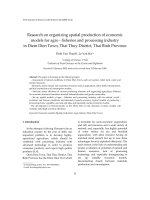
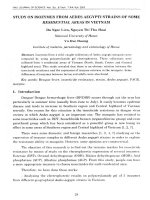
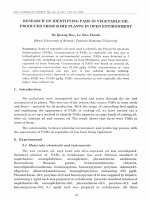
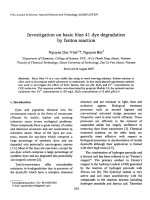
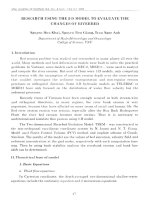
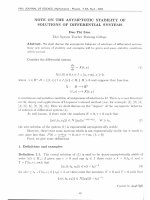
![DSpace at VNU: Corrigendum to ‘‘Nonlinear dynamic response of imperfect eccentrically stiffened FGM double curved shallow shells on elastic foundation’’ [Compos. Struct. 99 (2013) 88–96]](https://media.store123doc.com/images/document/2017_12/14/medium_vrh1513028470.jpg)
